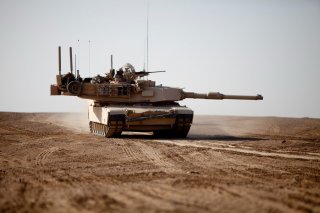The Biggest Obstacles for US Tanks in Europe are its Bridges
Tanks are heavy weapons.
Key point: U.S. allies in Europe need to revamp their aged and weak bridges if they expect the U.S. to counter a Russian invasion.
The U.S. Army and its closest allies have a problem. The region of the world where they arguably are most likely to deploy its heaviest vehicles for high-tech combat also is peppered with flimsy old bridges that can’t support the vehicles’ weight.
This first appeared earlier and is being reposted due to reader interest.
And the Army for one is struggling to buy armored bridge-layers that can help to mitigate the problem.
The requirement is clear. To deter Russia from attacking Poland and the Baltic States, the Army and its NATO allies should deploy heavy armored forces such as M-1 tanks, armored fighting vehicles, and self-propelled artillery.
RAND, a California think-tank with close ties to the U.S. military, in a February 2020 report underscored the importance of heavy ground forces.
“The results of the analysis provide consistent evidence for the deterrent effects of heavy ground forces and air-defense capabilities,” RAND explained, “especially when deployed in the general theater of interest but not necessarily on the front lines of a potential conflict.”
An Army regiment with 300 Stryker wheeled vehicles is the only mechanized American force permanently in Europe. The Army's 173rd Airborne Brigade also is based on the continent.
The ground-combat branch recently returned to Europe a battalion of tracked rocket launchers. A second battalion is slated to join it in 2020, at which point the service will have around 18 rocket launchers on the continent.
The Army also temporarily deploys one armored brigade at a time to Europe, each on a nine-month rotation. A typical armored brigade has around 90 M-1 tanks and 130 M-2 fighting vehicles plus around 18 M-109 self-propelled howitzers.
NATO countries together keep around 130 tanks in the same region -- and around 90 of those are the American M-1s on their temporary rotation. Russia by contrast keeps around 760 tanks in units within quick striking distance of NATO's Baltic members.
But U.S. and NATO tanks weigh 60 tons or more. That’s a problem. “While Western European infrastructure was often reinforced during the Cold War to handle the weight of 60-plus-ton NATO tanks, Eastern Europe couldn’t afford to build as robustly and, in any case, only had to accommodate much lighter Soviet tanks, like the 45-ton T-72,” Sydney Freedberg, Jr. explained at Breaking Defense.
“Poland, in particular, has many rivers and few reinforced bridges,” Freedberg added. “It has run afoul of E.U. regulators for not being able to accommodate heavy vehicles.”
“What does this mean militarily? At more than 60 tons, the M-1 Abrams main battle tank and most of its NATO kindred – the British Challenger 2, the German Leopard II, even the French Leclerc — are already unsafe for many bridges where the alliance most urgently needs them.”
The U.S. Army deploys armored bridge-layers in order to help tanks cross narrow gaps. But around 200 of the service’s roughly 250 bridge-layers are 1970s-vintage AVLBs, which use M-60 tank chassis and are too slow and unreliable to keep up with fast-moving tanks.
The rest are 1990s-vintage Wolverine bridge-layers that use the M-1 chassis. The Wolverine is faster but its bridging mechanism is complex. “We found out it was hard to operate and maintain,” Lt. Col. Jeff Biggans, the product manager for Army bridging, told Defense News.
The Army is developing the new Joint Assault Bridge, which combines the AVLB’s style of bridging equipment with a fast M-1 chassis. It’s a “compromise,” Biggans said. But the JAB has problems, too.
Early tests of the new bridge-layer in 2019 found serious flaws. “The issues we found were primarily related to the hydraulic system or training issues,” Steve Rienstra, an Army product manager for bridging, told Defense News.
The company that makes the JAB, Leonardo DRS, has redesigned the new bridge-layer. The Army has expressed its confidence that the next round of testing will go better for the JAB. But in the meantime, the service cut $126 million from the program’s projected $200-million budget for 2021.
At the very least, the new bridge-layer will be late arriving in the force -- and precisely at the moment when the Army and its allies need some way to get their tanks across Polish rivers whose bridges are too flimsy for the load.
David Axe serves as Defense Editor of the National Interest. He is the author of the graphic novels War Fix, War Is Boring and Machete Squad. This first appeared earlier and is being reposted due to reader interest.
Image: U.S. Marines.

